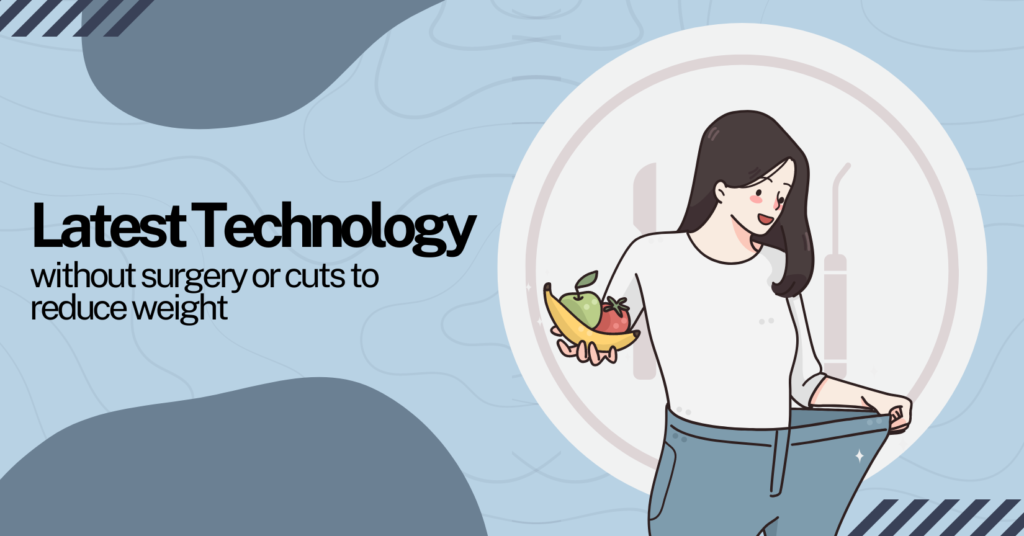
Exploring Intragastric Balloons.
The struggle to lose weight can seem never-ending. Exercise regimens fade, diets come and go, and frustration frequently sets in. However, what if there was a technology that you could use to lose weight without having to undergo intrusive procedures or surgery? Now introduce the intragastric balloon, a cutting-edge device that is completely altering the way people look for a secure and efficient way to lose weight.
An intragastric balloon: what is it?
Envision a gentle, silicone balloon that fills up your stomach gradually, increasing sensations of fullness and causing you to eat less food overall. That is the intragastric balloon’s fundamental working theory. Through your tongue, this minimally invasive weight-loss gadget is placed into your stomach and inflated with saline fluid. Unlike traditional weight-loss surgeries, there are no cuts or incisions involved, making it a more accessible option for many individuals.
Different Intragastric Balloon Types
There are now two primary varieties of intragastric balloons on the market:
Single Balloon: Usually placed endoscopically, this balloon requires the use of a thin, flexible tube equipped with a camera to aid its placement inside your stomach. Before being extracted endoscopically as well, it stays inflated for six to twelve months.
Swallowable Balloon: This more recent invention is ingesting a capsule that holds a balloon that has been deflated. The capsule dissolves in your stomach, and a small catheter is used to inflate the balloon with saline before being taken out through your mouth. This kind of balloon often remains in situ for four months, at which point it deflates on its own and passes through your digestive tract.
How Does It Operate?
The sensation of fullness, or satiety, is encouraged by the intragastric balloon. Taking up space in your stomach will make you feel fuller after eating less portions, which will naturally result in consuming less calories. With time, considerable weight loss may result from this calorie reduction. The balloon may also slow down the food’s journey through your stomach, which would increase your sensation of fullness.
Intragastric Balloon Advantages
When compared to conventional weight-loss procedures, intragastric balloons have the following benefits:
Minimally Invasive: By eliminating the need for cuts or incisions, this procedure lowers the risk of infection and other postoperative problems.
Reversible: The balloon is transient and can be taken out without causing your stomach any long-term harm.
Fewer Side Effects: After insertion, intragastric balloons typically cause fewer side effects than operations, such as nausea and vomiting, which go away in a few days.
Lifestyle Modifications: By encouraging smaller quantities and thoughtful eating, the balloon can help you form healthy eating habits.
Effective Weight Loss: Research indicates that intragastric balloons can result in weight loss that is substantial, frequently surpassing 10% of a person’s body weight in a matter of months.
Who Qualifies for an Intragastric Balloon Procedure?
Intragastric balloons don’t offer a universally applicable remedy. Generally, they are advised for those who are overweight or obese with a Body Mass Index (BMI) between 27 and 40 and have struggled with traditional weight-loss methods and are not suitable candidates for weight-loss surgery due to underlying health conditions.
A Comprehensive Analysis of Swallowable vs. Single Balloons
Although both single and swallowable balloons provide efficient weight loss options, there are a few important distinctions to be aware of:
Insertion Process: While swallowable balloons do not require an endoscopy, single balloons do require one.
Duration: Compared to swallowable balloons, which only last four months, single balloons usually remain in place for six to twelve months.
Removal Method: While swallowable balloons naturally travel through the digestive system, single balloons require an additional endoscopic operation to be removed.
Benefits of Single Balloons: They might be more appropriate for people who require longer-term assistance with weight loss.
Swallowable balloons have the following benefits: a more comfortable and non-invasive insertion and removal procedure.
Security and Possible Hazards
Intragastric balloons are generally regarded as safe, yet there are several possible risks:
Deflation: If the balloon deflates too soon, it may need to be removed and may interfere with your efforts to lose weight.
Blockage: Rarely, the balloon may result in an obstruction in the digestive tract that needs to be cleared by an endoscope.
Ulcers: By irritating the stomach lining, the balloon may raise the chance of developing ulcers.
Vomiting and nausea are frequent adverse effects, particularly in the early days following insertion.
Not Ideal for All Candidates may not be appropriate if they have a history of stomach ulcers or inflammatory bowel disease, among other medical issues.
Extended Research and Achievement Ratios
Research on the long-term efficacy of intragastric balloons for maintaining weight loss is still ongoing. Although studies yield encouraging outcomes, sustained weight loss following balloon removal necessitates a commitment to lifestyle modifications.
Below is a summary of what the research indicates:
Initial Weight reduction: Within the first several months of balloon insertion, studies regularly show significant weight reduction, frequently surpassing 10% of body weight.
Weight Loss Maintenance: It can be more difficult to keep off weight once the balloon is removed. According to studies, there are differences in success rates; some people regain some of the weight they lost after two years.
Importance of Lifestyle Changes: People who combine the balloon with sustainable food and exercise practices report the best long-term results.
Remedies Other Than Intragastric Balloons
There are further non-surgical options for weight loss than intragastric balloons. Here’s a quick rundown of the two options:
Gastric banding: This laparoscopic technique entails encircling the upper part of the stomach with an adjustable band to form a smaller pouch that limits the amount of food that can be consumed. Gastric banding is a more invasive, permanent operation that requires a longer recovery period than balloons.
Endoscopic Sleeve Gastroplasty: This endoscopic technique creates a sleeve-shaped pouch by removing a piece of the stomach, which lowers the stomach’s capacity and encourages satiety. It’s a more intrusive choice than balloons, similar to gastric banding, but it takes longer to recuperate.
The Path to Intragastric Balloon Success
Although they are a useful tool, intragastric balloons should only be considered a temporary solution to long-term weight control. In order to get effects that last, it’s essential to:
Create Healthy Habits: Consult a medical practitioner to create a diet and exercise regimen that you can stick to even after the balloon is taken out. This could entail incorporating regular physical activity, eating mindfully, and controlling portion sizes.
Behavioural Therapy: If you want to address the underlying emotional causes that could lead to overeating, you should think about behavioural therapy. You can learn coping strategies from a therapist to overcome emotional eating and bad eating habits.
Support System: Encircle yourself with loved ones and friends who will be there to support you during your weight-loss quest. Having a support system can make a significant difference in maintaining motivation and achieving your goals.
Gastroplasty balloons are a viable substitute for those looking to lose weight without undergoing surgery in a secure and efficient manner. Speaking with a medical practitioner about intragastric balloons can be a wise move if you’re having trouble with conventional procedures and are willing to consider other approaches. Recall that while the balloon can help you start losing weight quickly, your ability to maintain your new healthy lifestyle will be essential to your long-term success.
Extra Things to Think About
Cost: Intragastric balloons might have varying costs based on physician skill, facility fees, and location. Before making a choice, it’s crucial to talk about the cost with your healthcare professional.
Insurance Coverage: Insurance coverage varies when it comes to intragastric balloons. It’s advisable to check with your insurance provider to determine if the procedure is covered and what your out-of-pocket costs might be.
By carefully considering the information presented here and discussing your options with a qualified healthcare professional, you can determine if intragastric balloons are the right approach for your weight loss journey.



